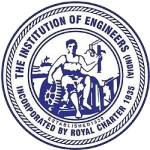SSR Stability Analysis and Modeling for DFIG Connected to Series Compensated Transmission Line
Abstract
Due to the massive increase in electrical energy demand, wind power penetration into electric networks is increasing. Usually, the wind farms are located away from the grid, necessitating a series compensated transmission system. Series compensation is always prone to sub-synchronous resonance (SSR), which may lead to the torsional interactions resulting T-G shaft fatigue and associated protection system. In this paper, a modified IEEE first Benchmark Model is used for SSR analysis. A doubly-fed induction generator (DFIG) has been considered supplying power to the grid through a series compensated transmission line. The dynamics of the Rotor Side Converter (RSC) and the Grid Side Converter (GSC) is used to model the DFIG. Thus, it can generate a significant impact in system dynamics. However, previous works have considered a constant voltage source model for RSC and GSC. Therefore, consequently these models are not capable of replicating the dynamic impact of SSR for some critical factors. The inclusion of GSC and RSC modeling in analysis reflects dynamics that are more accurate. The eigenvalue analysis has been used to study the impact of SSR under different operating situations, for instance, wind speed fluctuations and varying the series compensation. To validate the analysis, time-domain simulations have been carried out by using MATLAB.
Downloads
References
M. Khayyatzadeh and R. Kazemzadeh, “Sub-synchronous resonance damping using high penetration PV plant,” Mech. Syst. Signal Process., vol. 84, pp. 431–444, 2017.
G. Li et al., “Analysis and Mitigation of Subsynchronous Resonance in Series-Compensated Grid-Connected System Controlled by a Virtual Synchronous Generator,” IEEE Trans. Power Electron., vol. 35, no. 10, pp. 11096–11107, 2020.
L. Fan, R. Kavasseri, Z. L. Miao, and C. Zhu, “Modeling of DFIG-based wind farms for SSR analysis,” IEEE Trans. Power Deliv., vol. 25, no. 4, pp. 2073–2082, 2010.
A. Adrees, Risk Based Assessment of Subsynchronous Resonance in AC/DC Systems. 2017.
J. Shair, X. Xie, L. Wang, W. Liu, J. He, and H. Liu, “Overview of emerging subsynchronous oscillations in practical wind power systems,” Renew. Sustain. Energy Rev., vol. 99, no. September 2018, pp. 159–168, 2019.
J. B. Ekanayake, L. Holdsworth, X. G. Wu, and N. Jenkins, “Dynamic modeling of doubly fed induction generator wind turbines,” IEEE Trans. Power Syst., vol. 18, no. 2, pp. 803–809, 2003.
Y. Lei, A. Mullane, G. Lightbody, and R. Yacamini, “Modeling of the wind turbine with a doubly fed induction generator for grid integration studies,” IEEE Trans. Energy Convers., vol. 21, no. 1, pp. 257–264, 2006.
H. A. Mohammadpour, A. Ghaderi, and E. Santi, “Analysis of sub-synchronous resonance in doubly-fed induction generator-based wind farms interfaced with gate – controlled series capacitor,” IET Gener. Transm. Distrib., vol. 8, no. May, pp. 1998–2011, 2014.
A. S. Trevisan et al., “Analysis of low frequency interactions of DFIG wind turbine systems in series compensated grids,” Electr. Power Syst. Res., vol. 191, no. February 2020, p. 106845, 2021.
J. Shair, X. Xie, W. Liu, X. Li, and H. Li, “Modeling and stability analysis methods for investigating subsynchronous control interaction in large-scale wind power systems,” Renew. Sustain. Energy Rev., vol. 135, no. August 2020, p. 110420, 2021.
P. S. E. C. IEEE, “IEEE Subsynchronous Resonance Task Force of the Dynamic System Performance Working Group Power System Engineering,” IEEE Trans. Power Appar. Syst., vol. PAS-96, no. 5, pp. 1565–1572, 1977.
Copyright (c) 2021 Neevatika Verma

This work is licensed under a Creative Commons Attribution 4.0 International License.
I/We agree with the provision of the Bye-Law 118 of The Institution of Engineers (India) which states that copyright of each paper published in Institution Journal or Annual Technical Volume in full or in Abstract at its centres shall lie with the Institution.

